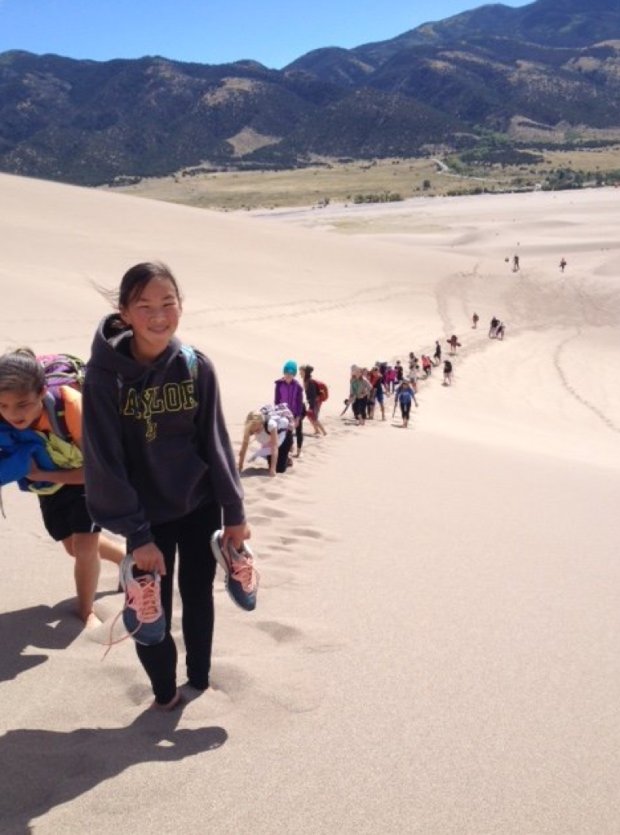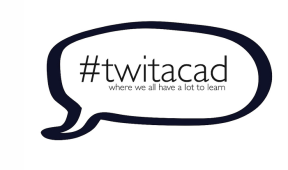
The Great Sand Dunes National Park is a truly incredible place. When you first pull up, it’s not much to look at. It isn’t until you are right up on it that you can really appreciate the sheer magnitude of the Dunes.
Then begins the climb. Shoes aren’t really conducive to this particular climb; they get instantly bogged down by the sand. The sand is often too hot to do the climb barefoot; my method of choice is two pairs of socks and no shoes. If you’ve ever run on a beach, you know that sand is a different running experience than asphalt or grass. It requires more from you, it’s constantly shifting. This is particularly true when the sand is in dune form and the goal is to reach the top. One step forward inevitably feels like taking two back. It’s slow going and can feel endless. As you actually climb up the dunes, scale gets lost and everything begins to look the same. I remember on my first trip to the Great Sand Dunes making it to the ‘top’ only to realize that there was another peak to climb that I couldn’t see as I was climbing the first. So, you slug through sand and keep climbing, muscles start screaming, wind blows sand in your eyes and nose, the sun reflects so brightly off of the sand that your eyes water, and you are hot and sweaty. You start to wonder if it is worth it? How much better could the view really be from the top? You reach the next peak and there is more. It feels never ending and you begin to wonder if this is some cosmic joke and there is no top of the dunes. Of course, it isn’t. It is in this moment that having a friend along is helpful. They cheer you on, reminding you of what is waiting.
There is a top.
It is glorious.
It is breath taking and awe-inspiring.
Beyond the view, you sit atop the sand knowing that in the past, you would have been in water. Incredible. An experience that could only happen this way in this moment in time.
The trip down the dunes takes no time at all. There is great joy in sledding down the sand, or rolling, or taking giant leaps down and pretending that you are on the moon.
Learning is a lot like climbing the Great Sand Dunes. You might begin the process excited, or nervous, or with anticipation. And likely, at some point it will start feeling like work. There will be moments when it feels frustrating to learn something new. Moments when it feels like climbing a hill of sand. One step forward and two back. There may even be those moments when you feel like giving up, like maybe the view from the top isn’t worth it. Moments when it feels hopeless and you are tired, and sandy, and hot. But, just like with the dunes, when you reach the top, the feeling is like no other.
Glorious.
Breath-taking.
Awe inspiring.
Elation.
It is in that moment that you can appreciate the journey. All of those moments that you pressed on despite wanting to give up. You have the gift of hindsight knowing that you made it to the top. And then the trek down the dunes where it is fun, playful, where you can appreciate all of the hard work that it took because now you can use what you’ve learned.
I wonder why we don’t share this more often with kids? That learning can be hard, that it can feel endless, but that just like climbing a sand dune, that struggle is worth it. That when you reach the top, you appreciate it all the more because of what you overcame on the journey.
We live in a society where everything appears to be easy. Where what we see is the happily-ever-after part of the story. When we share on Instagram, it’s rarely the picture during the climb in the moment that we are ready to give up. More often, the picture shared is the perfect shot from the top. The one that has been retouched so that you can’t tell we are covered in sand, and sweaty, and almost didn’t make it. We share the happily-ever-after where the journey is glossed over and we’ve skipped straight to the win.
Consider the way that our grading system sends this same message. A grade celebrates and highlights one moment in time and completely ignores the journey. We celebrate the test score, the grade, and fail to talk about the journey: the excitement, frustration, the moments where we wanted to give up. We fail to talk about the journey of learning. I think this failure to talk about journey leads to apathy. It leads kids to give up too soon. Or assume that others can learn, but they don’t have what it takes.
Our students generally only see the happily-ever-after part of the story. This is true even as we watch documentaries like Caine’s Arcade. Students see the highlight reel of Caine’s story and the way that a movement started. How often do we help our students remember all of those moments that Caine sat alone waiting for someone to show up and care? How often do we talk about the trial and error and amount of time that it takes to build an arcade like Caine had? I’m not suggesting that Caine’s Arcade isn’t valuable for students to see, but equally valuable is the discussion about the hard parts. The parts where you feel like giving up. The journey.
I had a visit from an Anastasis alumni a few weeks ago. She is frustrated that she doesn’t know exactly what she wants to do in life. That she can’t see the path, but she knows she has worth, and passion, and something to say. “I just feel like I don’t know what I’m doing. I feel like I should know what I’m supposed to do next.” She wants so badly to see the finish line…the happily-ever-after. She wants to know that she isn’t going to be climbing a peak on the dunes only to realize that it isn’t the top, that there is another peak.
I tried to reassure her, “None of us know what we are doing. We all choose a direction (and if we are honest, we really don’t know if it is the ‘right’ one) life has a way of shifting and suddenly our path looks different than we would have ever imagined.”
She told me that it was easy for me to say, “Look at you, you started a school! You know what you want to do and you are doing it. You are living your dream!”
And it was then.
In that moment that I knew that I hadn’t shared enough of my journey. I had only shared the highlight reel. She has only seen my “happily-ever-after” (if only she knew!) She doesn’t know the parts of the climb when I was frustrated, hot, had sand in my eyes, and wanted to give up. She doesn’t see those moments when I’ve reached a peak hoping that it is the top only to look up and realize that I haven’t made it. (Riley…this happens to me DAILY!!)
I wonder what would happen if we helped students see that learning isn’t really about the happily-ever-after moment. It isn’t about the grade. It isn’t about the career that we have.
It is about the journey that we take.
The moments of struggle.
The glorious moments of inspiration and breakthrough.
The fun and elation we experience when we are doing something we could have never imagined for ourselves. That in hindsight the journey makes sense, but often as we are living it we are unsure of where we are in the journey, how far we have yet to go, and if we are even headed in the right direction.How do we help students to see that none of us really have this figured out?
How can we be more transparent and help reveal the joy in the journey?
One of the things I love about Anastasis is the intentional travel that we do with students. Our Jr. High students take several trips a year where they get the opportunity to live this kind of journey. They visit the Great Sand Dunes, or the Black Hills, or Santa Barbara, or Costa Rica, or Moab. They get to experience some of this struggle first hand and then reflect on the journey (read those reflections here). It’s an incredible way to get them outside of comfort zones, build community, and help them experience the joy in the journey. (Hat Tip to Simply Venture for making those trips possible for our students!)
What language, systems, and structures do we have in place in our schools and classrooms that keep kids believing that they can skip directly to the happily-ever-after? Can we be more transparent as teachers, as administrators, as parents in sharing our journey struggle and all? Can we change the way that we grade to help students track the learning journey instead of just the ending point? Can we spend time helping students recognize that every story includes moments of struggle, or feelings of being lost? Can we reflect on the happily-ever-after moments with students and help them recognize the journey that it took to get there?
Can we reveal joy in the journey?



